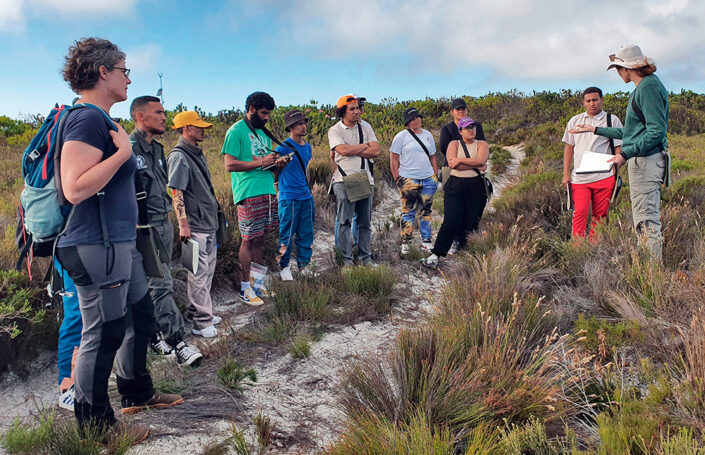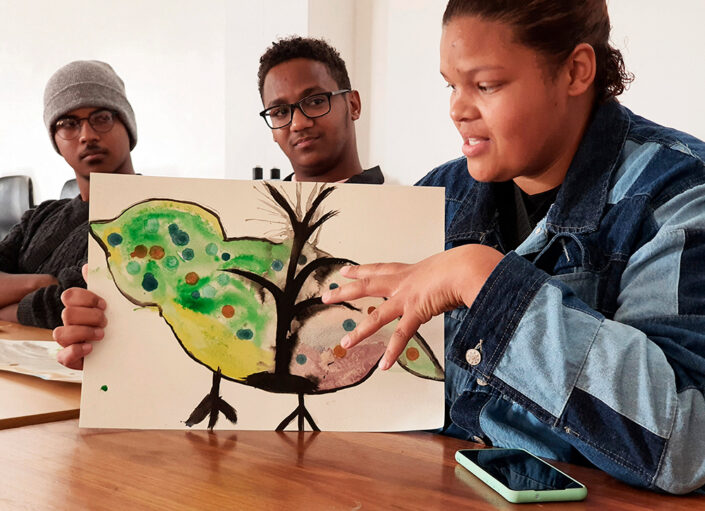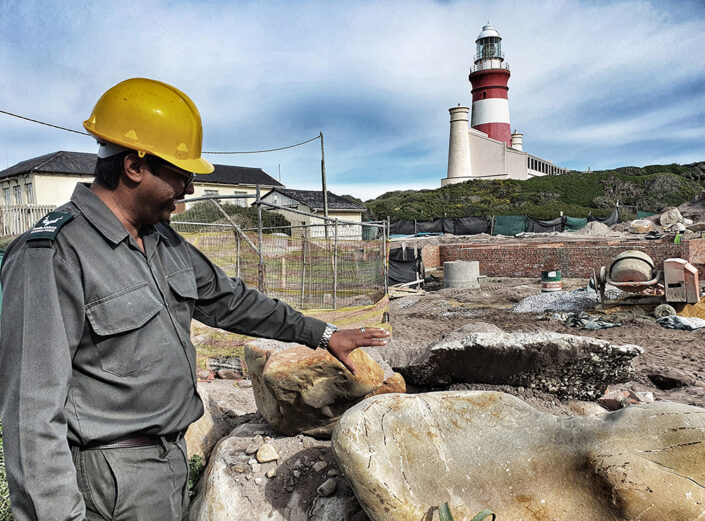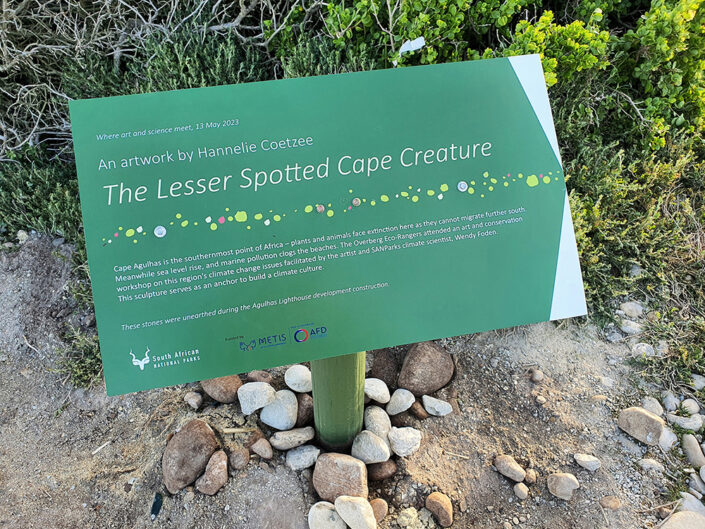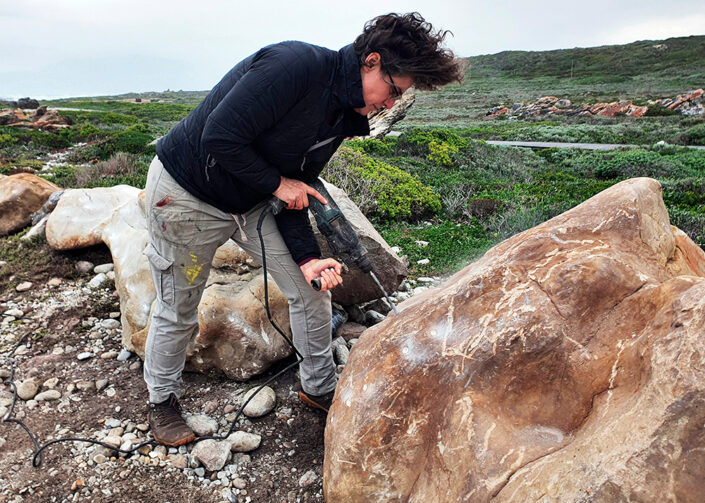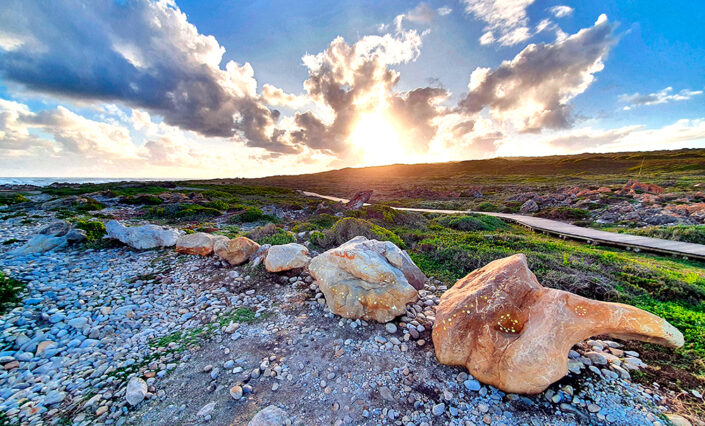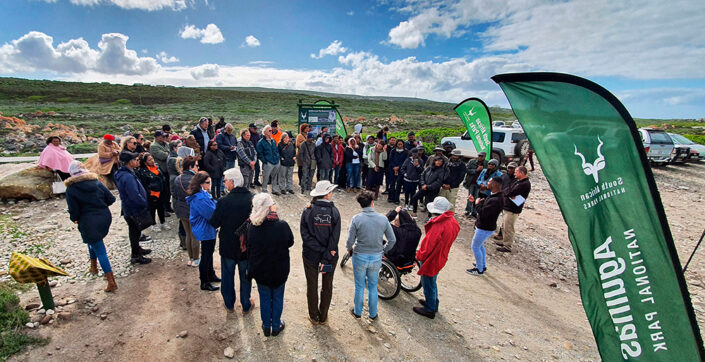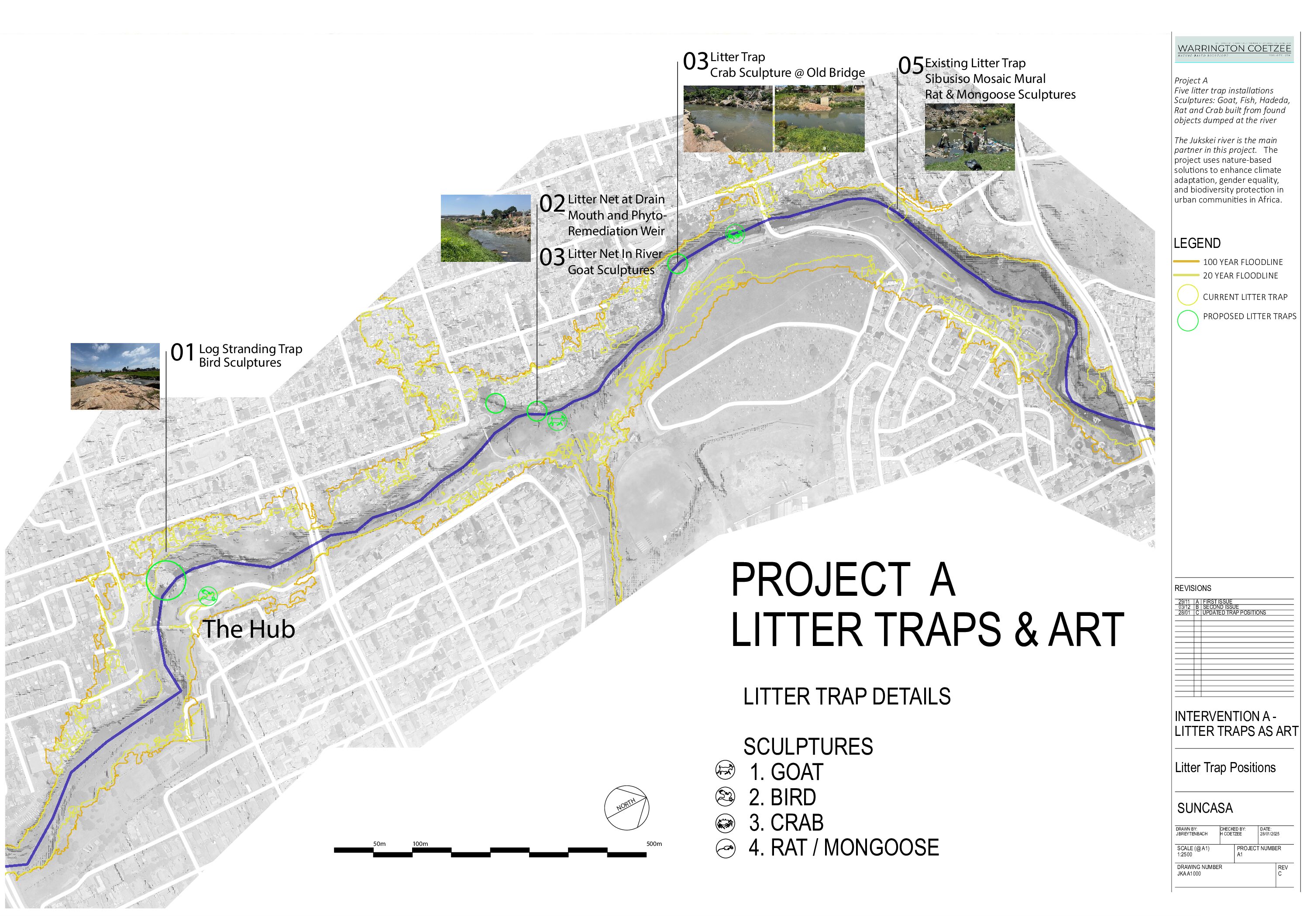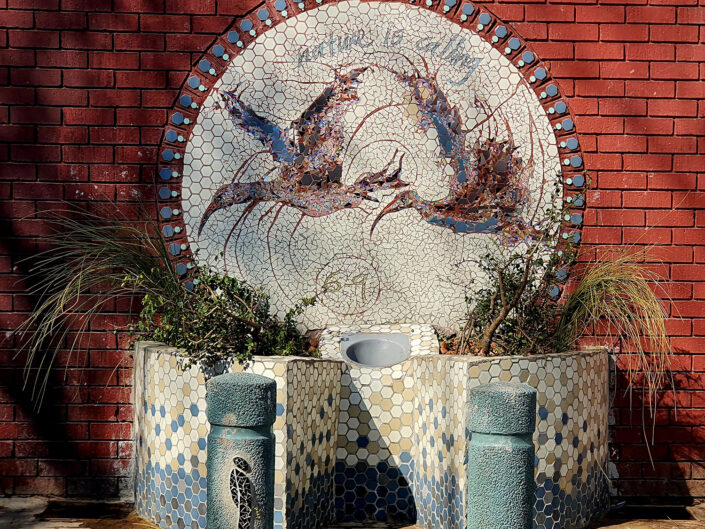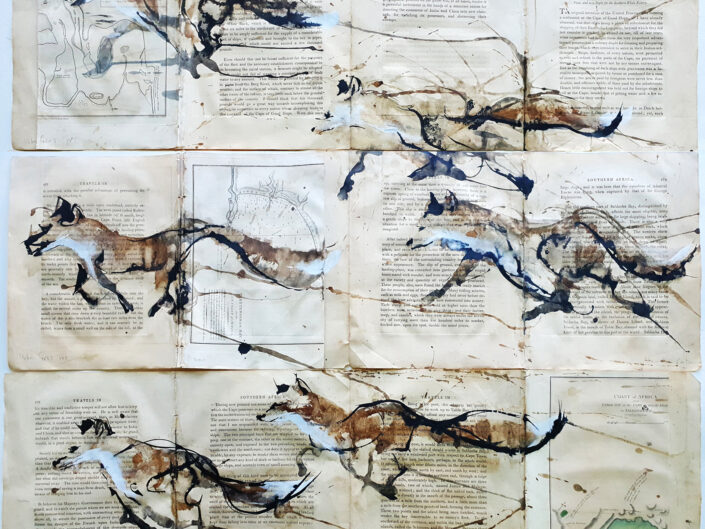2023 Lesser Spotted Cape Creature
A Metis art and conservation initiative in partnership with SANParks and the Overberg Eco-Rangers: “Africa’s southern tip: The end of the road for plants and animals fleeing climate change” resulting in the site responsive artwork at the southern most tip of Africa, titled: “The Lesser Spotted Cape Creature”.
A Metis art and conservation initiative “Africa’s southern tip: The end of the road for plants and animals fleeing climate change” Resulting in the site responsive artwork at the southern most tip of Africa, titled: “The Lesser Spotted Cape Creature” 2023
Across the world climate change causes havoc when we least expect it. It has regional effects which is hard to act upon effectively because there is no instruction manual on how to deal with multiple disasters inhabiting our every day. We all must learn how to adapt and think on our feet. While oceans levels rise, plants go extinct here on the southern tip because they have no further south to go. This intervention was prepared by the artist and environmental scientist mimicking this nimble approach; to think on our feet, problem solve as it happens. We also ensured that the traces we left during the intervention will warm the young eco-rangers’ hearts in this difficult time.
We prepared this art and conservation initiative keeping the abovementioned complexity in mind. We knew we wanted to hear what the local pressures are whilst sharing information about the regional climate change issues. We set out in our creative ways, which the eco-rangers could test themselves and embody. We held a workshop while walking and drawing and thinking together. The workshop was met with deep curiosity about the present and concern for the future, whilst acknowledging the difficult past that caused it. It is such a fragile balance to part with facts of the world falling apart without causing disdain.
We all got to know each other over the weekend sharing diverse thoughts about our different lives and using various sci-art prompts with our field bags as tools to develop the voices of the Eco-Rangers to speak up about the climate change conundrum. It resulted in sincere participation and a respectful silent protest on the southern tip of Africa, which we captured on film and photos and then cleaned up immediately. The workshop experience is well captured in the film by Reney Warrington (Watch here). The inspiration the artist got from the workshop was then translated into an artwork at the southern tip of Africa titled: The Lesser Spotted Cape Creature (Watch film here.)
Grassroots interventions reach only succeeds if facilitators listen and understand the local context. Changing the medium and the site of the artwork after the workshop was because of listening to what makes most sense in this space. The new site is in an optimal position to help visitors find their way to the southernmost tip of Africa. The sculpture does not exceed the horizon line as to not impose on the natural beauty. The Lesser Spotted Cape Creature sits comfortable in the surrounds just alluding to something wo-manmade with the yellow and red spots, engraved and painted into the rock. One easily can miss it because it is intended to show visitors to the walkaway which is the most eco-conscious way to arrive at the southernmost tip. The arrow points towards the sculpture but also to the walkaway – optimizing the interventions respect for nature and playfully subtle in the landscape.
Art and climate change information can feel abstract to many citizens (Smith-nonini, 2016), but artists have an advantage in transmitting information about abstract subject matter to new audiences (Warrington-Coetzee, 2022) in the way we have done here. The success of this intervention is well captured in the long list of platforms the eco-rangers prepared themselves to reach out to their own wider communities in the weeks ahead.
References
Smith-nonini, S. (2016) ‘Inventing Eco-Cycle A Social Enterprise Approach to Sustainability Education My Path to Sustainable Community ’:, 1(1), pp. 14–21. doi: 10.3167/aia.2016.230103.
Warrington-Coetzee, H. (2022) Eco-art for a transformative climate culture. University of the Witwatersrand.


